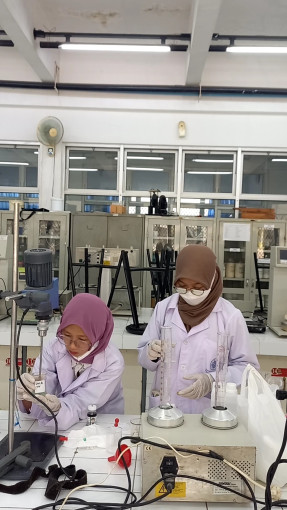
Five UGM students have researched the potential of microalgae, specifically Chlorella vulgaris, as a treatment for mouth cavity wounds, particularly traumatic ulcers in type 2 diabetes mellitus (DM) patients.
This research is motivated by the abundant availability of microalgae in Indonesia. However, the country’s utilization of them is still not optimal.
Microalgae, such as Chlorella vulgaris, are rich in pigments and phytochemical compounds with significant health benefits. Chlorella vulgaris is abundant in Indonesia and easily cultivated.
“Chlorella vulgaris is a type of microalgae abundant in Indonesia and is easily cultivated. However, its utilization in the health sector, especially for wound healing, is still limited. Nevertheless, C. vulgaris contains pigments like chlorophyll,” explained Kusumaningdyah Retno Asrining P.
On the other hand, Indonesia faces the reality of being the fifth-highest country in the world for diabetes patients. Type 2 DM patients can experience traumatic ulcers in the mouth cavity.
However, the healing process of traumatic ulcers in type 2 DM patients often experiences delays.
Considering this situation, Kusumaningdyah Asrining, along with Sofiana Aida Nurjanah (Dentistry 2021), Gladys Rista Anggraini (Dentistry 2021), Atikah Nurunnissa’ (Biology 2020), and Nirvane Zefanya Kasih (Pharmacy 2021), explored the potential of mucoadhesive patches containing C. vulgaris in improving the healing of traumatic ulcers in type 2 DM patients.
Dr. Archadian Nuryanti supervised their research.
Sofiana Nurjanah added that in the production of the wound treatment, Chlorella vulgaris was extracted by the team to obtain a concentrated extract. This extract was then formulated into a mucoadhesive patch, providing stronger adhesion than gel formulations.
Subsequently, the preparation was applied to experimental animals, Wistar rats induced with type 2 DM, and injuries were made on the underside of their mouths.
Each day, Chlorella vulgaris patches were applied to the wounds, and the rats were sacrificed on the 3rd, 5th, 7th, and 14th days. Afterward, mouth tissue was extracted for histological analysis.
Although this research is still in the experimental stage, it is hoped that it will evolve into an alternative treatment for traumatic ulcers in type 2 DM patients.
Furthermore, this innovation has the potential to enhance microalgae processing in Indonesia and become a reference for future research.
Author: The UGM Microalgae Research Team
Editor: Ika

